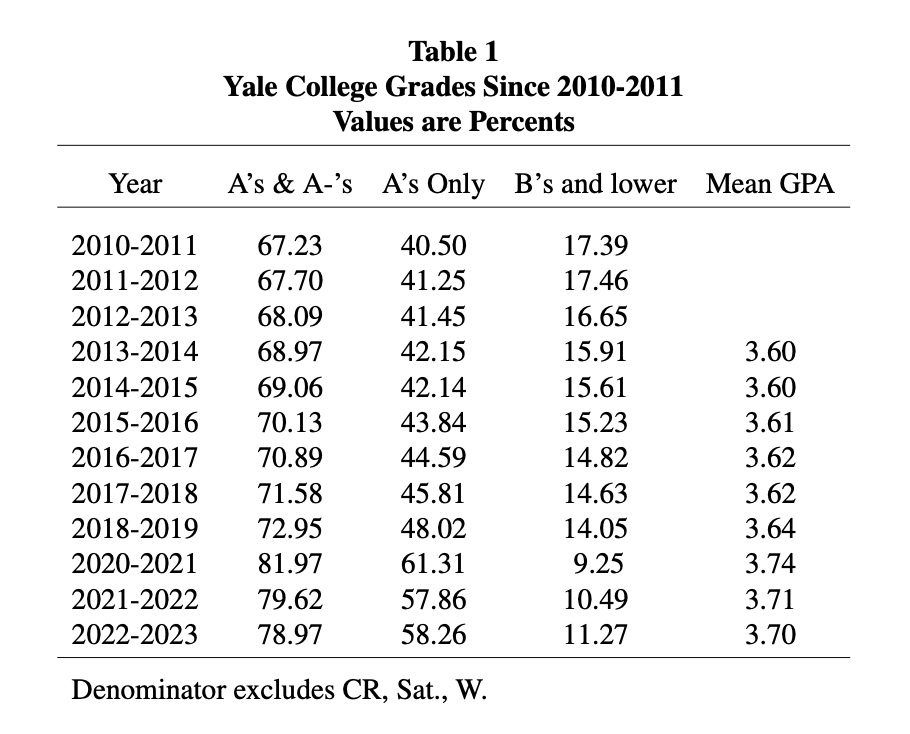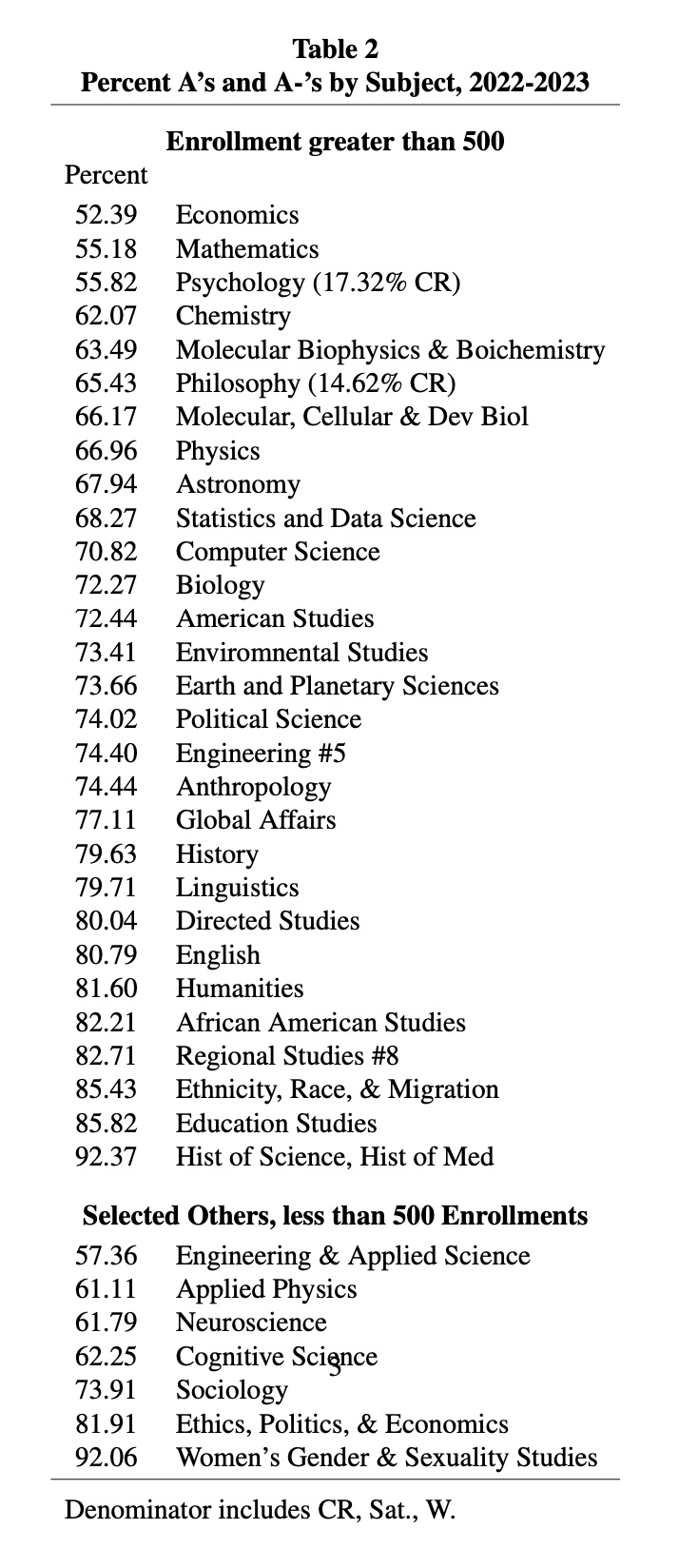Faculty report reveals average Yale College GPA, grade distributions by subject
Seventy-nine percent of Yale College grades were in the A range for 2022-23 — nearly identical to figures released by Harvard College in October.

Yale Daily News
Yale College’s mean GPA was 3.70 for the 2022-23 academic year, and 78.97 percent of grades given to students were A’s or A-’s.
The data, which show a sharp hike in grades coinciding with the start of the COVID-19 pandemic, come from a document presented at a November faculty meeting. According to economics professor Ray Fair, who authored the report, Yale College Dean Pericles Lewis distributed the document to faculty members who attended the meeting.
Even before the pandemic, the percentage of A-range grades was climbing — it reached 72.95 percent in the 2018-19 academic year, up from 68.97 percent five years prior. But in 2020-21, that share jumped to 81.97 percent. Fair dubbed the grading upturn “the COVID effect.”
“Some thought [the COVID effect] would be temporary, but it has more or less persisted. [It’s] probably the faculty going easier on students because COVID was a pain,” Fair told the News. “The report simply documents the history of grading at Yale … It gives the ‘current state of grading’ and I think the numbers are straightforward to interpret.”
Fair sent the document to the News after the News reached out to ask his thoughts on grade inflation. Earlier this semester, the University Registrar’s Office denied the News’ request to access Yale College grading data, and the University has not published similar data in over a decade.
Fair later said that he sent the report with Lewis’ permission and would not have done so otherwise. Lewis told the News that he gave permission “in order to promote transparency.”
“As you can see, a large majority of grades in Yale College are in the A range (A or A-),” Lewis wrote in an email to the News. “This results in compression, making it difficult for instructors to use grades for their intended purpose of helping students understand areas of strength and others that need attention.”
Lewis added that, at the November faculty meeting, he encouraged faculty “to make use of the full range of grades where appropriate.”
Fair’s three-page grading report — compiled using data from the Registrar’s Office — has two tables. Table 1 provides data on Yale College grades since 2010, including letter-grade percentages and mean GPAs. The table does not include data from the 2019-20 academic year because spring-semester classes were graded under a “universal pass/fail” policy.

Table 2 breaks down grading data by academic subject. In general, STEM subjects seem to have lower percentages of A-range grades, and humanities subjects seem to have higher percentages.
There is significant variation in the frequency of A-range grades across “large-enrollment subjects,” ranging from 52.39 percent for Economics to 92.37 percent for History of Science, Medicine and Public Health. Lower-enrollment subjects display similar variation, ranging from 57.36 percent for Engineering and Applied Science to 92.06 percent for Women’s, Gender and Sexuality Studies.

Table 2 does not include languages, art and music, which, per the report, “may differ from the other subjects regarding grading issues.” The report also notes that Philosophy and Psychology have higher percentages of Credit — “CR” — grades than other subjects, which may distort their percentages in the table.
The Harvard Office of Undergraduate Education presented a similar report on grade inflation to the university’s Faculty of Arts and Sciences in October. The report found that 79 percent of grades given to Harvard College students for 2020-21 were in the A range — virtually identical to Yale’s percentage for 2022-23.
Harvard’s report also registered a discrepancy in A-range grades between STEM and the humanities.
In 2001, when a Boston Globe report found that 91 percent of Harvard seniors graduated with Latin honors that year, the Globe called Harvard honors “the laughingstock of the Ivy League.” Harvard’s faculty, in turn, called grade inflation “a serious problem.” At the time, Yale went on the record saying that it would not release grading data because doing so could cause professors to grade more leniently when they learned how others were grading.
But the University changed its tune in 2013, when then-Yale College Dean Mary Miller created an “Ad Hoc Committee on Grading” to curb grade inflation and ever-climbing GPA cutoffs for Latin honors. The Committee, chaired by Fair, issued a preliminary report that included grading data showing that 62 percent of grades awarded to Yale College students in spring 2012 fell in the A range.
On the basis of the Committee’s final report in 2014, Yale’s faculty voted to have summaries of departments’ grades distributed to other departments every year. The Committee also recommended that the University implement non-mandatory grading guidelines, but the faculty rejected the proposal.
Fair said that the faculty has not attempted to address grade inflation in the years since. Although most Yale faculty members agreed that there was grade inflation in 2017 — when the percentage of A-range grades was approximately six points lower than it is now — fewer said that they viewed it as a problem.
Yale College does not use the A+ letter grade.
Tables from “Grade Report Update: 2022-2023,” November 2023, courtesy of Ray Fair.







